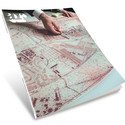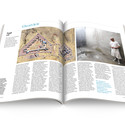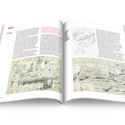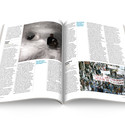ArchDaily continuing our partnership with the architectural Review, bringing you brief introductions to the themes of the monthly editions of the magazine. In this editorial from February 2015 the number of AR, AR Editor Catherine Slessor reflects on ouevre Álvaro Siza, his work at the beginning of Évora in his last effort in China. While it is certainly elegant, Slessor concludes that, compared to its former transformer designs recent incarnation of "Siza brand" is a "predictable triumph of style over content."
The great Portuguese Modernist Fernando Távora once remarked "Style does not matter; what matters is the relationship between work and life, style is the consequence of it" His friend and protected Álvaro Siza done echoed that sentiment when he said:... "the architecture has no language preset or establish a language is a response to a concrete problem, a situation in transformation in which I participate in architecture we have already passed the stage at which we thought the unity of language would resolve everything. a pre-established language, pure, beautiful, does not interest me. "
Admirable though this is, it may seem like a somewhat contradictory statement when discussing his latest project (p30) in which, like many others before him, his work Siza exports to China in a predictable triumph of style over content. Serenely marooned in a pellucid shell, its new offices for a local chemical plant has the appearance of a rattle gently grafted trophy on what is essentially a huge industrial complex in a corporate titivation act. for all its undeniable qualities as a piece of architecture, you get the nagging feeling of Brand Siza hit China with a delightfully minimal thump.
It is always fascinating to measure the symbolic and literal distances traveled by great architects during their career. Siza last transcontinental trip could not be further from the Iberian original environment, which is explored in a new visit to his project of 1977 social housing, Quinta da Malagueira in Évora, an old Roman hill town in the south from Portugal. (This exploration is brought further to life by a film specially designed for the AR website.)
In its relationship with the site, topography, history and use patterns, the Évora project is a very sophisticated and sensitive piece of urbanism that invites reading "less as a fixed artifact and more like an episode in the ongoing transformation of the site," as Ellis Woodman writes . and at a time when Western architects are rarely trusted to urban planning on a large scale, it is an ambitious and radical business almost unthinkable.
Rather than an arbitrary system forms, Siza has designed a framework for existence that has stayed the course, appropriate and shaped by its people. It embodies the idea that, at its most basic, the architecture is the context of the life lived, a step ( or even film) is defined for the activity, such as landscapes and spaces are animated by currents of human interaction. Buildings could maintain their separateness obstinate as objects, but are marked and defined by mankind over time.
For balance, it is difficult not to see the Chinese chemical plant as an elegant but stubbornly separate object, while the Évora case relates more closely to the continuum of life human. In doing so, it is emblematic of another resonant Siza epithet which should serve the profession's mission statement:
["Thearchitectsinventnothingtheytransformreality"
Subscribe to The architectural Review



 5
5
Posting Komentar